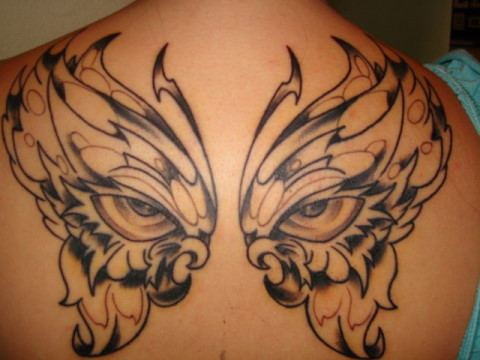Where do Celtic Butterfly Tattoos come from?
Celtic culture revolved around its strong links with nature, from the humble rock to the beautiful butterfly the Celts featured everything in their rich tradition. Celts were especially drawn to winged animals, believing these magical creatures contained souls, flying on an important journey searching for a new mother.
This was the case of the butterfly, when an ideal female host was found the butterfly would conceal itself in her food/drink and wait to be consumed. Thus the butterfly would impregnate their soul, enabling it to be reborn within a child.
To the Celts a butterfly was a strong symbol of reincarnation and evolution. A butterfly escaping from its cocoon, evolving from its previous grub form and by the injection of its soul into a woman its rebirth human infant. Peace, elegance and beauty all positive elements held highly in Celtic society were epitomized by the butterfly. These pagan foundations have carried through into modern society with Celtic Butterfly Tattoos.
Butterfly's which came in the night were not good omens. Moths are a distant relative of the butterfly, but lack the grace and elegance of their cousins. Butterfly's are the complete opposite of this, renowned for bringing happiness and good fortune, a tradition which has carried on to present day.
What goes into the design of Celtic Butterfly Tattoos?
Knots were an integral part of Celts culture, the designs would take the form of a never-ending rope representing the cycle of life and reincarnation. Knot designs were evolved into butterfly shapes, this pagan tradition is used to this day in Celtic Butterfly Tattoos. Celtic knot-work patterns were developed by the Celts originally, later monks carried on the work inherited from their ancestors. To assist with the concentration required for prayer, pages of holy text would be continually decorated with knot-work patterns. The monks believed their increased concentration would bring them closer to their god.
Using the method of knotting and applying it to a butterfly enable artists to create Celtic Butterfly Tattoos. A never-ending flow of rope forms the body and wings, twining inside and out to form the detail. A strong outline gives artists a excellent base to work from, additional detail and designs can be applied. Popular objects include other Celtic charms such as four leaf clovers, these charms build up a story behind the tattoo.
Where can I find Celtic Butterfly Tattoos?
It can be a struggle finding the perfect design for a tattoo especially when you want a unique design. In recent years people have turned towards online design galleries which offer a diverse and large selection in comparison to catalogues found in tattoo parlours. Experienced tattoo artists will have no problem replicating a design they are presented with. A good method is to take time to research Celtic Butterfly Tattoos, to ensure a unique and appropriate design is found. Suzanne Bryan































No comments:
Post a Comment